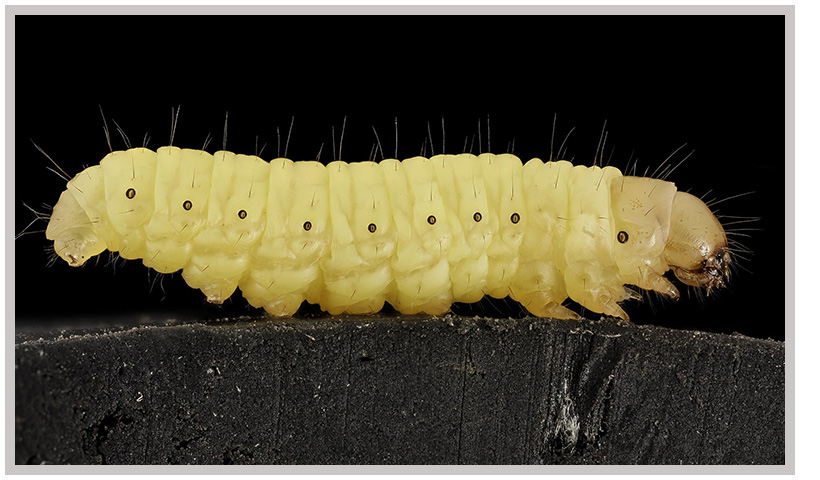ISSUE 2 |
|
ISSUE 2 |
|
An accidental discovery made by scientist and amateur beekeeper, Federica Bertocchini of the Institute of Biomedicine and Biotechnology of Cantabria in Spain could help to provide future solutions for waste disposal for plastics. According to statistics, 102.1 billion plastic bags are consumed in the United States each year alone. Additionally, 2.4 million tons of PET plastics are discarded in the U.S. annually with 41 percent of this material being in the form of water bottles. Unfortunately, only a small fraction of this material is processed and available for recycling with the vast majority of it being relegated to landfill sites or for incineration. Plastics buried in landfills can often take hundreds of years to degrade naturally and can have severely negative effects over-time by leaching toxins into the surrounding environment.
Considered by most as pests, wax worms (Galleria Mellonella) are the larvae of the wax moth and live as nest parasites while eating the cocoons and pollen of honeybees. In the wild, wax worms will chew through wax cones to access the hive. In order to reach a full state of maturity, wax worms will occupy the cone cells and can spread disease throughout the rest of the hive. Wax worms are often bred in captivity for the purpose of being used as live-bait or as a live-feed option for some variety of lizards.

Discovering that her own beehives had become infested with wax worms, Bertocchini removed the invasive larvae and temporarily placed them in plastic bags. After returning some time later, she noticed that many of the worms had chewed holes into the plastic bags and escaped. Afterwards, Bertocchini began to wonder about whether or not the worms were simply chewing and passing the material they ate or if they were actually breaking the plastic down during the digestive process. Bertocchini also had a hunch that perhaps certain chemical agents or enzymes inside the digestive tracts of the worms themselves were actually responsible for the breakdown. She went on to test her theory by mashing-up some wax worms into a paste and applying the paste directly to the surface of the plastic.
Some time later, she noticed that the same effect had taken place and some chemical degradation seemed to be evident on the plastic. Although not connected to her own scientific research, Bertocchini decided to connect with biochemists Christopher Howe and Paolo Bombelli at the University of Cambridge and try to understand how wax worm paste was affecting chemical bonds in plastics. Together, the scientists found that the worms were causing some of the polyethylene plastic to become converted to ethylene glycol. This seemed to show that the wax worms were actively degrading the plastic material. Since bee’s wax can be understood as a kind of polymer itself, it made sense to Bertocchini and to the other scientists that wax worms could also break down synthetic polymers like polyethylene.
While it seems unlikely that wax worms could be used to mechanically dispose of the hundreds of millions of tons of plastic bags and other polyethylene materials being disposed of annually, this research could prove promising. It may be possible to isolate the specific enzymes being used by wax worms to chemically de-bond plastics and thereby replicate their action. Applied on a large scale, what the simple wax worm does naturally could have positive effects for us and our own attempts to manage the past, present and future disposal of plastics. BACK